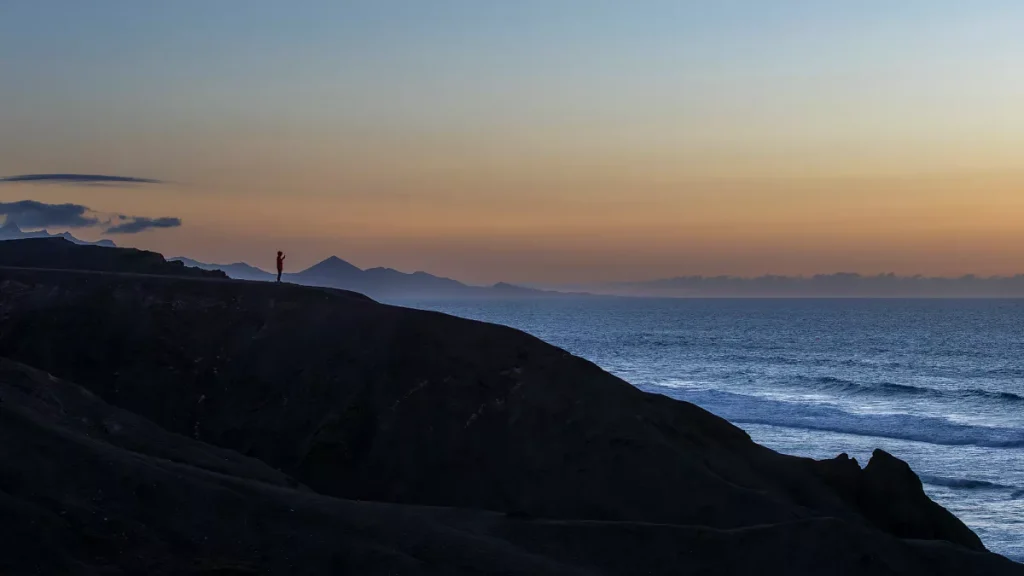Paradise Under Pressure: The Canary Islands’ Tourism Boom
The Canary Islands, Spain’s sun-drenched archipelago off the northwest coast of Africa, has long been a beloved vacation spot for Europeans seeking year-round warmth and diverse landscapes. However, 2025 has brought unprecedented crowds to these volcanic shores, culminating in a record-breaking August that saw 1.23 million foreign visitors descend upon the islands—a 6% increase from the previous year. This surge is particularly remarkable given that summer represents the hottest season in the Canaries, traditionally a time when tourism slightly wanes. From January through August 2025, the islands welcomed over 10 million international tourists, securing their position as Spain’s third most popular destination during this period. British travelers continue to dominate the visitor demographic, accounting for nearly half a million arrivals in August alone, followed by a substantial German contingent. With tourism representing approximately 35% of the archipelago’s GDP, these numbers might seem like cause for celebration among industry stakeholders, but the reality is more complex as both residents and environmental advocates grow increasingly concerned about sustainability.
The archipelago’s enduring appeal is easy to understand. Situated approximately 100 kilometers from the African mainland, the Canaries offer a perfect climate virtually year-round, making them an attractive escape for sun-starved Northern Europeans regardless of season. Each of the seven main islands—Tenerife, Fuerteventura, Gran Canaria, Lanzarote, La Palma, La Gomera, and El Hierro—presents visitors with its own distinct character and landscape palette. From pristine beaches and lush forests to dramatic mountain ranges and even an active volcano, the natural diversity within this relatively compact region is extraordinary. Add to this the archipelago’s accessibility via numerous direct flights from major European cities (despite recent Ryanair cancellations potentially affecting some routes), and it’s little wonder that tourism continues to boom. However, this accessibility is becoming a double-edged sword, as increasing visitor numbers strain local resources, infrastructure, and community goodwill.
The sentiment among locals has been shifting noticeably in recent years, mirroring the anti-tourism movements that have emerged elsewhere in Spain, particularly in Barcelona and Mallorca. The Canary Islands have witnessed their own share of protests against mass tourism, with residents expressing frustration over rising housing costs, environmental degradation, and the transformation of traditional neighborhoods into tourist enclaves. This tension highlights the fundamental challenge facing popular destinations worldwide: balancing economic benefits with preservation of local culture, community cohesion, and natural environments. As visitor numbers continue to climb despite these concerns, authorities across the archipelago have begun implementing various measures aimed at managing tourist flows and mitigating negative impacts, though critics argue these efforts may be too little, too late.
Among the most significant new initiatives is an upcoming “eco-tax” for hiking popular trails at Tenerife National Park, home to the iconic Teide-Pico Viejo volcano—the archipelago’s most visited natural attraction. Set to take effect by 2026, this fee structure will charge visitors approximately €25 for access, with specific trail prices varying based on difficulty and demand. The coveted “Telesforo Bravo” summit route will cost €15 for unguided hikers or €10 with a guide, while the Montaña Blanca-Rambleta trail will command €6 on weekdays and €10 during weekends and holidays. Notably, Tenerife residents and children under 14 will maintain free access, while residents of other Canary Islands will enjoy reduced rates. Tenerife’s president, Rosa Dávila, defended the measure on social media, describing Teide as “our crown jewel” and emphasizing that the fees would help ensure its protection “for today and future generations.” Beyond generating revenue, park authorities hope the pricing structure will help distribute visitor numbers more evenly across times and routes, reducing peak congestion and associated environmental impacts.
Beyond Tenerife, other islands are implementing their own strategies to address overtourism concerns. New Spanish legislation has empowered local communities to regulate short-term rentals more stringently, with residents now able to vote on banning new holiday accommodation in their neighborhoods—a direct response to housing affordability challenges exacerbated by the proliferation of Airbnb-style properties. In Gran Canaria, the town of Mogán introduced a modest daily visitor fee of €0.15 in January, creating a precedent that other municipalities may follow. Perhaps most noteworthy is the approach taken by El Hierro, the westernmost and least developed of the main islands. Long before overtourism entered the global lexicon, El Hierro embraced a deliberately sustainable tourism model characterized by limited accommodation options and no direct international flights, effectively filtering visitor numbers through natural constraints rather than explicit restrictions.
While these measures represent important steps toward more sustainable tourism management, the record-breaking numbers of 2025 suggest that the Canary Islands remain at a critical juncture. The archipelago faces fundamental questions about its future: what visitor volume represents a healthy equilibrium between economic benefit and environmental/social sustainability? How can tourism evolve from a volume-based model to one that prioritizes quality experiences and distributes benefits more equitably throughout local communities? The answers will require ongoing dialogue between residents, industry stakeholders, and government officials. Additional policies like public alcohol consumption prohibitions and smoke-free beach designations address some quality-of-life concerns but don’t tackle the fundamental issue of visitor volume. As climate change accelerates and northern Europeans increasingly seek winter sun, pressure on the Canaries may well intensify further. The islands’ experience serves as both warning and laboratory for destinations worldwide grappling with similar challenges—demonstrating that paradise found can quickly become paradise overwhelmed without thoughtful management and collaborative planning that prioritizes long-term sustainability over short-term gains.


